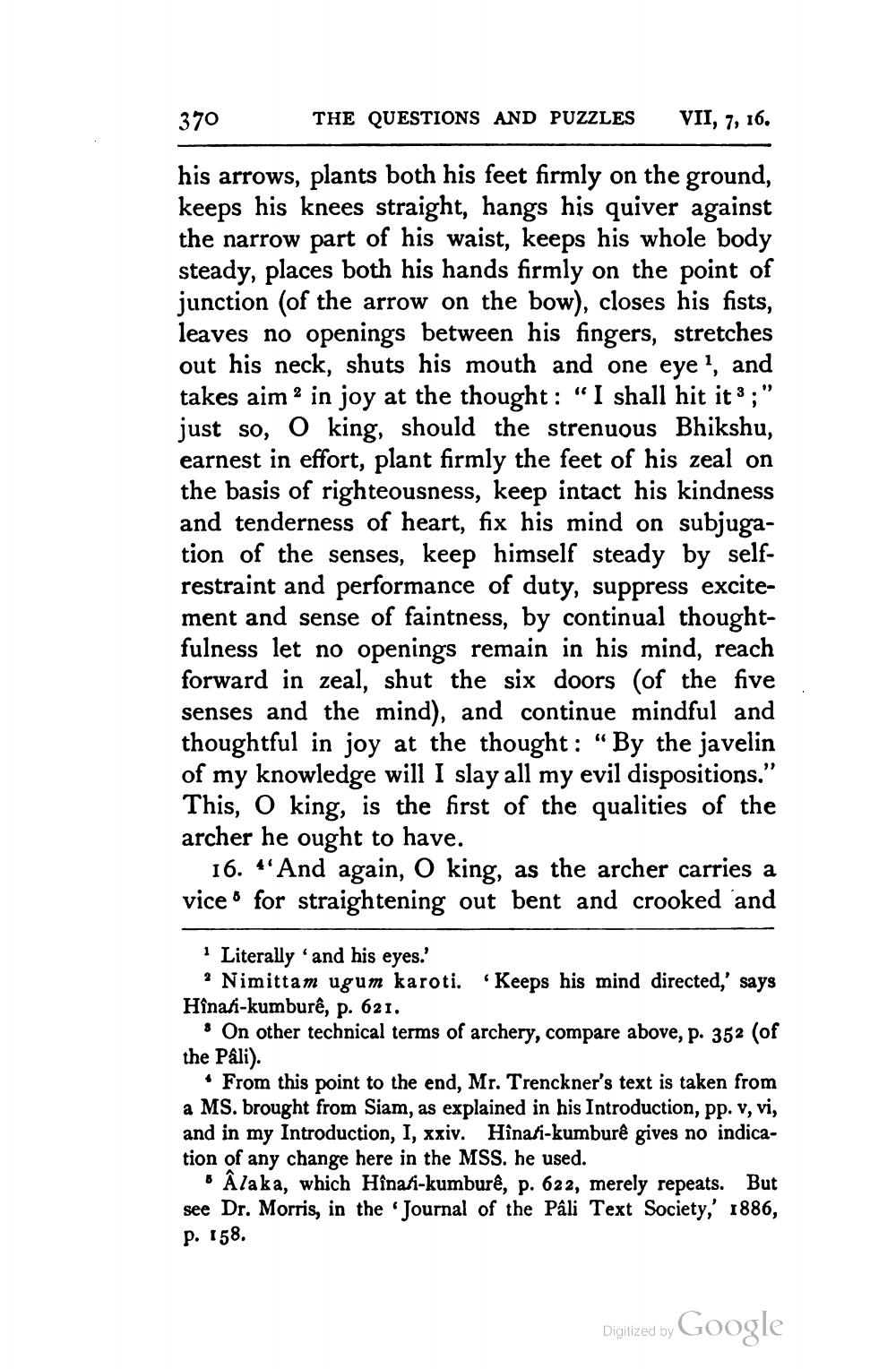________________
370
THE QUESTIONS AND PUZZLES VII, 7, 16.
his arrows, plants both his feet firmly on the ground, keeps his knees straight, hangs his quiver against the narrow part of his waist, keeps his whole body steady, places both his hands firmly on the point of junction (of the arrow on the bow), closes his fists, leaves no openings between his fingers, stretches out his neck, shuts his mouth and one eye', and takes aim 2 in joy at the thought: "I shall hit it3;" just so, O king, should the strenuous Bhikshu, earnest in effort, plant firmly the feet of his zeal on the basis of righteousness, keep intact his kindness and tenderness of heart, fix his mind on subjugation of the senses, keep himself steady by selfrestraint and performance of duty, suppress excitement and sense of faintness, by continual thoughtfulness let no openings remain in his mind, reach forward in zeal, shut the six doors (of the five senses and the mind), and continue mindful and thoughtful in joy at the thought: "By the javelin of my knowledge will I slay all my evil dispositions." This, O king, is the first of the qualities of the archer he ought to have.
16.
And again, O king, as the archer carries a vice for straightening out bent and crooked and
1 Literally and his eyes.'
2 Nimittam ugum karoti. Keeps his mind directed,' says Hînafi-kumburê, p. 621.
On other technical terms of archery, compare above, p. 352 (of the Pâli).
C
• From this point to the end, Mr. Trenckner's text is taken from a MS. brought from Siam, as explained in his Introduction, pp. v, vi, and in my Introduction, I, xxiv. Hînati-kumburê gives no indication of any change here in the MSS. he used.
Alaka, which Hînafi-kumburê, p. 622, merely repeats. But see Dr. Morris, in the 'Journal of the Pâli Text Society,' 1886, p. 158.
Digitized by
Google




